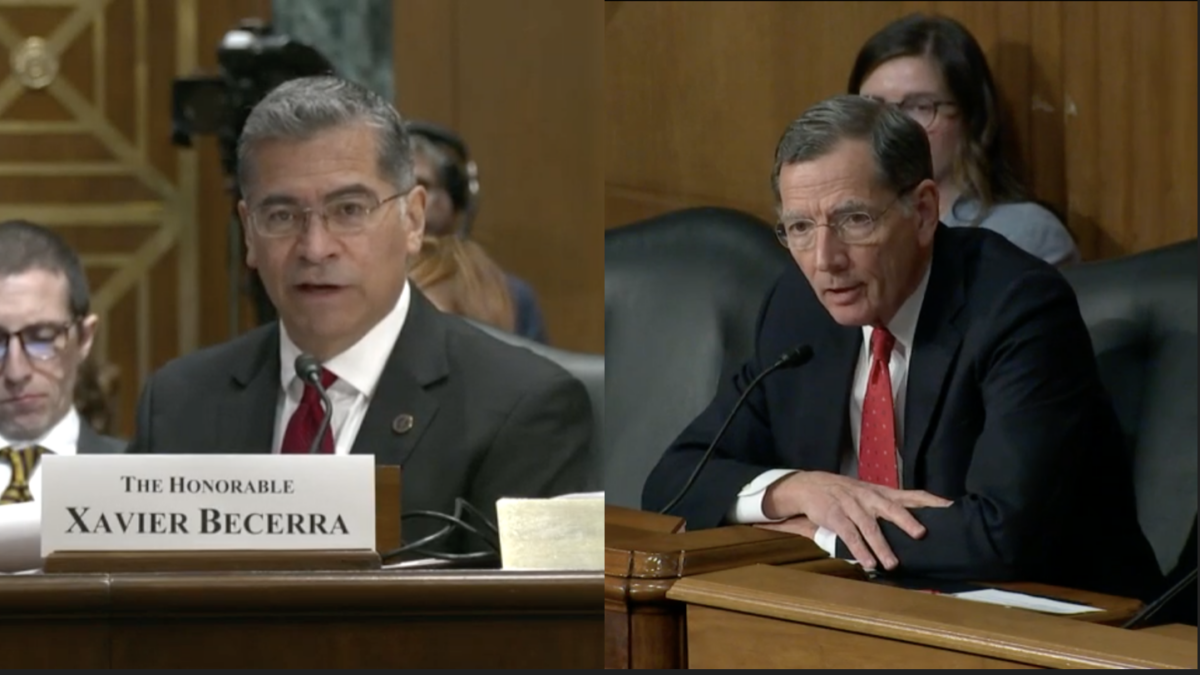Title 42, a pandemic emergency measure enacted by the Trump administration to deter illegal immigration, is set to expire on May 11, and the Biden administration expects rising crossings at the U.S.-Mexico border. American businesses may embrace this influx of immigrant labor with open arms because they often cite a persistent labor shortage as their top concern and insist they need immigrants to do the jobs Americans won’t do.
In a recent piece, Oren Cass at American Compass argues that American workers would do any job if the wages were high enough. He accuses greedy businesses and the availability of low-wage immigrant workers of causing decades of wage stagnation for American workers. Thus, he advocates for skill-based immigration reform to help American workers secure good-paying jobs. While some of his ideas make sense, others deserve scrutiny.
In “Jobs Americans Would Do,” Cass wrote, “From 1972 to 2022, real corporate profits per capita rose 185%. GDP per capita rose 141%. Productivity rose 135%. The average hourly wage for production and nonsupervisory workers rose 1%.” A similar assertion has been repeated before by The New York Times, CNBC, the Economic Policy Institute, and many others.
But such a claim is highly debatable. Allison Schrager, a senior fellow at the Manhattan Institute, called the wage stagnation claims “misleading” because they “rely on the CPI-U (Consumer Price Index of Urban Consumers) measure of inflation … the CPI-U assumes larger inflation than the average household experiences … [and] makes stagnation seem worse than it is.”
Many studies about wage stagnation also fail to capture increasing workplace benefits, such as paid leave and health insurance. Schrager deemed that on an individual level, most people did “experience wage growth over their working years,” and college-educated workers “tended to experience a much faster wage increase.”
Michael Strain at the American Enterprise Institute concurred. His analysis shows American workers’ wages were not stagnant: “Using July 1990 as the base period, average real wages using the CPI grew by 21 percent over the three-decade period ending in February 2022. Real wages grew by 39 percent using the PCE [personal consumption expenditure price index].”
Are Immigrants Depressing American Workers’ Wages?
Although the claim of wage stagnation is questionable, Cass is correct to state that “immigration is a form of population growth” and America’s current immigration policy has flooded “the low end of the domestic labor market with foreign workers.” It’s Economics 101: An increase in supply (labor) drives down the price (wages).
Analysis from Harvard labor economist George Borjas demonstrates that immigrants (both legal and illegal) from 1990 to 2010 reduced the average annual earnings of American workers by $1,396 in the short run. He concluded that “a 10-percent increase in the size of an education/age group due to the entry of immigrants (both legal and illegal) reduces the wages of native-born men in that group by 3.7 percent and the wage of all native-born workers by 2.5 percent.” His analysis also confirms that the less-educated and least-skilled Americans suffer the most negative effects on their wages in the short term when competing against immigrants for low-paying, least-skilled occupations.
However, Borjas’ study found that the downward pressure on wages caused by new immigrants became negligible in the long run. That’s confirmed by other research: Giovanni Peri, an economics professor at the University of California-Davis, found “little evidence of a wage-depressing effect of immigration because immigrants are absorbed into the receiving economy through a series of adjustments by firms and other workers. Once these adjustments are accounted for, the wages of native workers, even workers with skills similar to those of immigrants, do not change much in response to immigration.”
Effect of Increasing Wages
Cass doesn’t differentiate immigrants’ long-term and short-term wage effects on American workers. He argues that if America reduces labor supply by reducing immigration, American employers will be compelled to raise wages high enough that all jobs will become attractive employment opportunities for American workers.
For example, Cass estimates that if the guest worker program for farming were eliminated, companies might be forced to quadruple farm wages for American workers. But these companies could easily pass on the higher labor costs to consumers by raising food prices by as much as 40 percent. He believes American consumers wouldn’t mind that “a $3.00 quart of strawberries might cost $4.50, and a $1.70 head of lettuce might cost $2.50.”
Cass’s argument is flawed because he ignores that American businesses are constrained by how much cost they can pass on to consumers without driving them away. American consumers are more price-sensitive than Cass asserts. For instance, after inflation rates hit a 40-year high last year, about 90 percent of Americans expressed concern about rising food prices. Many reportedly changed their shopping behaviors, especially at the grocery stores.
Other Factors Affected American Workers’ Wages and Employment
Cass also failed to recognize other factors that have nothing to do with immigrants but have affected American workers’ employment.
First, America has experienced a cultural shift, and labor-intensive jobs such as picking fruit, slaughtering chickens, and housekeeping are undesirable to even some of the poorest Americans. In the summer of 2015, The Wall Street Journal reported a persistent farm labor shortage due to fewer illegal immigrants. Despite farmers raising some wages by more than 20 percent and the youth unemployment rate being 12.2 percent in July 2015, few Americans filled the farming vacancies.
Mike Rowe, host of the popular TV show “Dirty Jobs,” criticized America for declaring “war on work as a society.” Rowe believes the real challenge for American workers is “cultural,” and we must change the conversation about the importance and dignity of blue-collar work. There are many well-paid labor-intensive jobs in the U.S.
Second, Cass fails to recognize that our nation’s generous welfare system and its relative ease of accessibility have created an unofficial minimum wage and an incentive for some American workers not to work. A Cato Institute study shows that in many states, “welfare pays more than a $20-an-hour job.” The U.S. government has sweetened unemployment benefits further since its Covid-19 lockdowns. A 2021 survey found that more than 1.8 million unemployed Americans have turned down job offers since March 2020 because of generous unemployment insurance benefits.
Lastly, our education system has failed to produce a sufficiently educated workforce. Unfortunately, extended school closures and ineffective remote learning during the pandemic have only increased our nation’s poor learning outcomes. There’s an indisputable mismatch between what students learn in school and the skills businesses need.
Given all these factors, blaming immigrants for depressing American workers’ wages and employment opportunities is neither fair nor accurate.
Skills-Based Immigration Is the Way Forward
Cass does recognize that America has skilled labor shortages in some sectors. He proposes establishing a skills-based immigration policy and enforcing E-Verify, a system that validates workers’ legal status.
Skills-based immigration with the assistance of mandating that employers use E-Verify would create a win-win situation: It would be good for the U.S. economy, American workers, and legal immigrants but also an essential first step to reduce incentives for illegal immigration, since most illegal immigrants are economic migrants who seek employment opportunities in the United States.
However, Cass is incorrect to argue that wages should determine immigration priority and that we should favor “highly skilled newcomers who are likely to compete in the labor market’s high-wage segments.” An actual skills-based immigration policy should give preference to immigrants who possess the skills our economy needs the most, regardless of their potential wages. Canada and Australia, two nations that operate the most successful skills-based immigration in the world, rely on national occupation databases to track skills gaps in their economies, and both have benefited by welcoming low-wage and high-wage immigrants. The United States should do the same.
Our ongoing southern border crisis is a reminder that the time for immigration reform is now, and doing nothing is not an option. Immigration needs more debate on a national level and in the chambers of the U.S. Congress.









